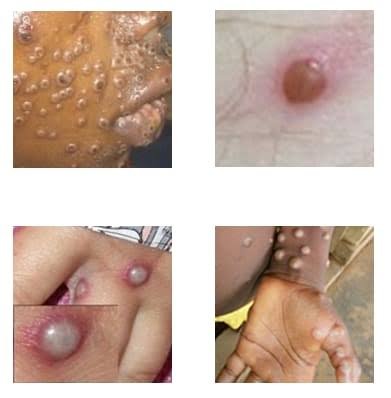Africa is experiencing a renewed alarm over monkeypox as a newly identified and more dangerous strain of the virus spreads across the continent.
This resurgence comes two years after a global outbreak.
The new Clade Ib subclade, first identified in the Democratic Republic of Congo (DRC) and now present in several neighbouring countries, is proving to be both more deadly and transmissible than previous strains.
The surge in cases has prompted health officials to urgently address the outbreak, which is marked by severe symptoms such as painful blisters, fever, and swollen lymph nodes.
The World Health Organization (WHO) is contemplating declaring an international emergency, similar to the response during the 2022 global outbreak. This new strain causes widespread skin rashes, unlike earlier strains that typically affected more localised areas.
Since September, the DRC has reported a dramatic increase in cases, with the virus spreading to nearby nations.
WHO Director-General, Dr. Tedros Adhanom Ghebreyesus has highlighted the need for increased funding and support for a comprehensive response and is considering convening an emergency committee to assess the situation.
“This virus can and must be contained with intensified public health measures, including surveillance, community engagement, treatment, and targeted deployment of vaccines for those at higher risk of infection.”
The Africa Centres for Disease Control and Prevention (Africa CDC) reports nearly 14,500 confirmed and suspected cases, with 455 deaths in the DRC as of August 3, reflecting a mortality rate of approximately three per cent, and up to 10 per cent among children.
The Congolese government has acknowledged an alarming rise in cases, particularly in densely populated displacement camps.
Mpox, first identified in humans in 1970 in the DRC, has historically been confined to specific West and Central African regions and transmitted mainly from infected animals. The global outbreak in May 2022, driven by a different subtype, Clade II, saw around 140 deaths from approximately 90,000 cases worldwide.



